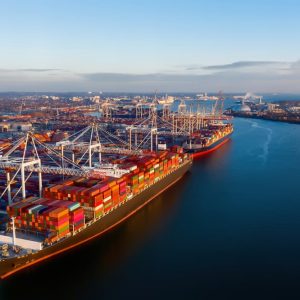
The blockage of the Suez Canal in March 2021 caused by the grounding of the Ever Given container ship brought the Global Shipping Industry into the global spotlight, but the disruption was just one factor in an industry already reaching a crisis point.
The Suez Canal is an extremely important artery in global shipping, but the problems the industry has faced are worldwide, and not restricted to the trade lanes transiting the Suez Canal.
In early 2020, when the COVID-19 pandemic began to spread, many countries implemented national lockdowns and ceased the production of goods, which ultimately pulled the plug on economic growth.
Shipping companies began reducing the number of cargo ships that were being sent out. This not only stopped the usual flow of import and export but also saw empty containers lying uncollected on docks.
Subsequently, the consumer economies in the West that were in lockdown started to switch their spending from experience-led spending (restaurants, cinema, holidays, etc), to physical goods (like electronics, exercise equipment, furniture etc). This was particularly true in the USA. This led to a very quick upturn in trade, which the supply chain could not cope with, and continues to struggle with today.
“The impact of COVID-19 on port and shipping operations along with the shortage of transport has led to the worst market conditions in the history of containerisation,” says Rob Lewis, Operations Director, Meachers Global Logistics, one of the UK’s leading independent providers of logistics services. “Empty containers are in the wrong place and ports are operating below capacity due to the impact of operating with COVID-19 protocols to keep their workforce safe.”
“This means that vessels cannot get into port at their scheduled times and, when they do, the loading is much slower than pre-COVID, this is allied with a shortage of haulage,” Lewis adds. “These are global issues. It has become a ‘perfect storm’, where demand is outstripping supply. The shipping line sailing schedule integrity was below 50% in December 2020, and when next reported this will, without doubt, be even lower, possibly under 30% integrity on advertised dates. These are not minor failings; we have seen ships slip back four weeks from their advertised dates.”
Yantian Port in China is suffering from severe congestion. Maersk Line has reported having vessels waiting sixteen days for a berth and has said that the impact of the situation in Yantian is far greater than the closure of the Suez Canal for a week when blocked by the Ever Given.
Service levels are at an all-time low, with little chance of recovery before Quarter 1 2022, but with demand still high freight rates are consequently at an all-time high, with the rates from Asia to the UK fast approaching $20,000 per 40ft container. There will be lower value cargo that cannot afford this level of freight rate, so this may start to have an impact on-demand, but even that is not certain, and it may be that if consumer demand remains for these products at higher retail rates, the volumes will stay at current levels.
“The truth is that no one knows how this will pan out,” continues Lewis. “The shipping lines are without doubt doing very nicely on revenue, but their operating costs will also have spiraled. It will be interesting to see, when the big container lines publish their results, how hard they have been hit, or if they have indeed profited from the pain felt by their customers.”









